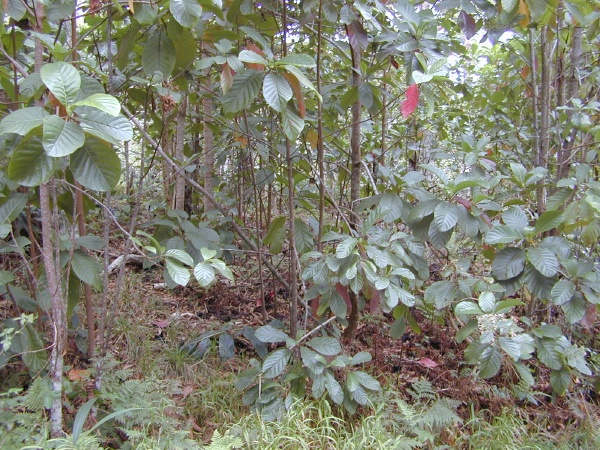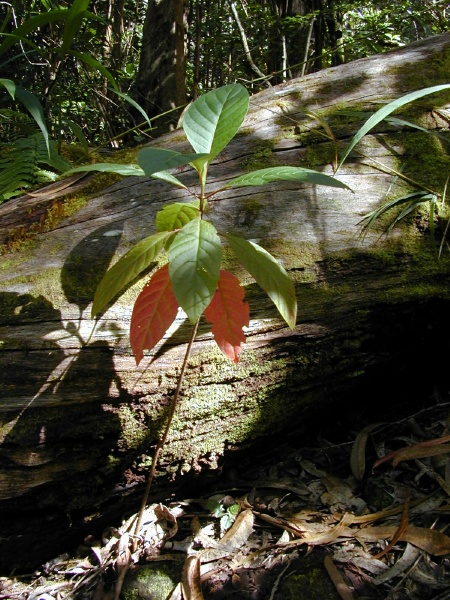Nutrition
The fever tree is able to acquire nutrients by means of
photosynthesis. This means that the tree is an
 autotrophic
or is "self feeding." The tree is able to use the energy
of the sun to convert carbon dioxide and water into sugar.
Oxygen is a byproduct of the process. The leaves of the
fever tree contain numerous chloroplasts which are the site of
photosynthesis. The leaves have a waxy cuticle covering
the surface of the leaves to prevent them from drying out.
The carbon dioxide is not able to pass through the waxy surface,
but is able to pass through an opening on the leaf surface
called a stoma. The other component necessary for
photosynthesis, water, is absorbed by the roots of the tree.
The water is pulled up in structures called xylem to the
site of photosynthesis by capillary action.
autotrophic
or is "self feeding." The tree is able to use the energy
of the sun to convert carbon dioxide and water into sugar.
Oxygen is a byproduct of the process. The leaves of the
fever tree contain numerous chloroplasts which are the site of
photosynthesis. The leaves have a waxy cuticle covering
the surface of the leaves to prevent them from drying out.
The carbon dioxide is not able to pass through the waxy surface,
but is able to pass through an opening on the leaf surface
called a stoma. The other component necessary for
photosynthesis, water, is absorbed by the roots of the tree.
The water is pulled up in structures called xylem to the
site of photosynthesis by capillary action.
Cultivated Cinchona pubescens
prospers in high altitudes at an average temperature
of 16-21° C and requires a high
level of humidity as well as an annual rainfall of
2.5-3.5 cm. The tree is not able to endure
temperatures below 8° C or above 26° C. The consequences of low altitudes or limited moisture
cause the amount of alkaloids in the bark to
decrease (which also decreases the amount of
quinine). Cinchona pubescens grows
well in fresh, virgin forest soils that have large
amounts of organic matter. The tree is able to
absorb the organic matter as well as other nutrients
through the roots and up the tree by structures
called phloem.
consequences of low altitudes or limited moisture
cause the amount of alkaloids in the bark to
decrease (which also decreases the amount of
quinine). Cinchona pubescens grows
well in fresh, virgin forest soils that have large
amounts of organic matter. The tree is able to
absorb the organic matter as well as other nutrients
through the roots and up the tree by structures
called phloem.
The fever tree also acquires more nutrients via a mutualistic relationship with a fungus which is discussed in more detail on the Interactions page. While this relationship is on your mind, go to Interactions next.
Back to Home.
